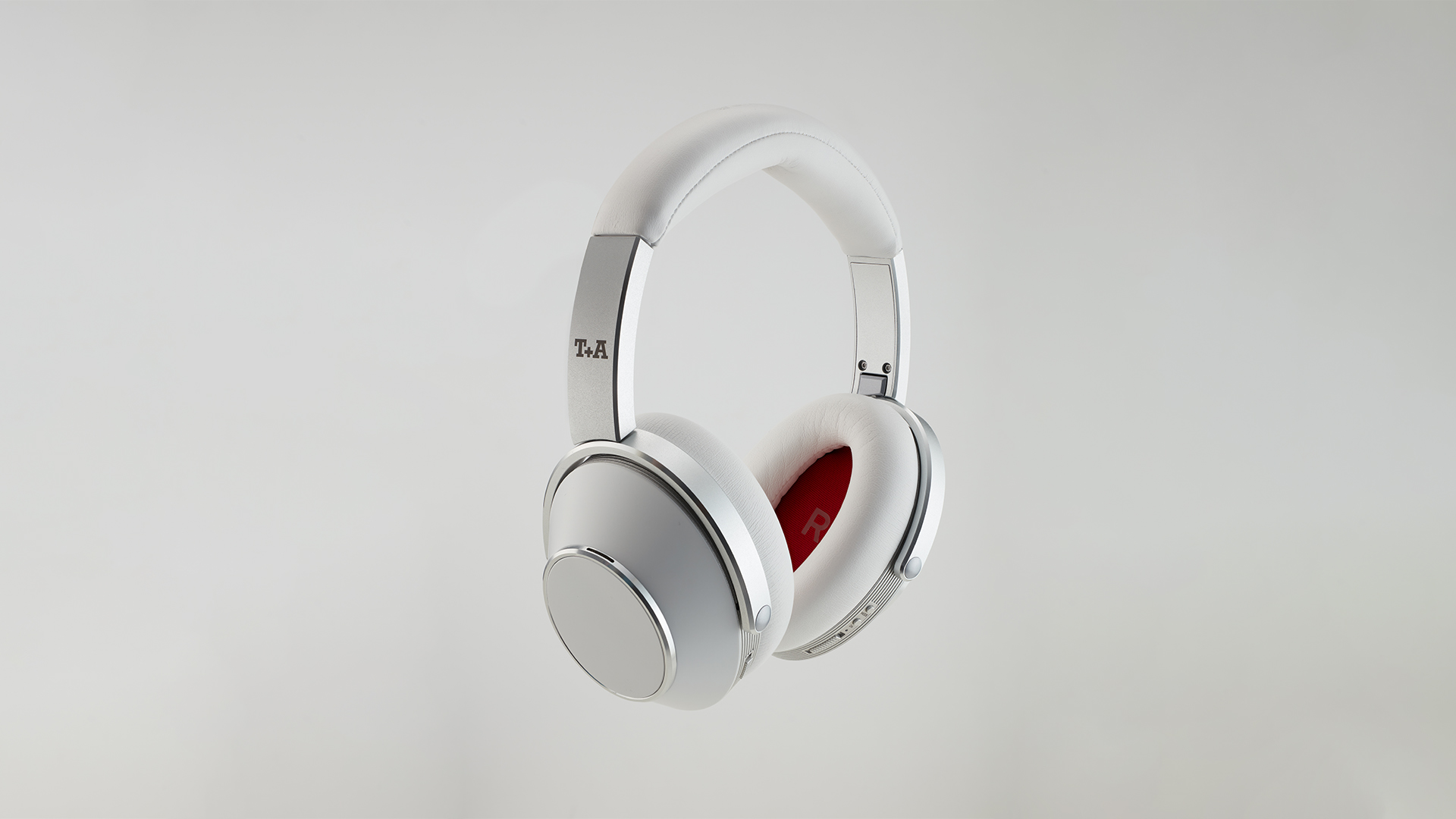
The Solitaire T may be as modern in the headphone world as streaming in the music one, with their Bluetooth, active noise cancellation and plush, practical, portable design giving them as many convenience points as style ones, but T+A insists they were first and foremost developed as passive designs (i.e. not digital; without electronics). As smaller, more affordable descendants of the company’s high-end wired Solitaire P and P-SE, with their “sound philosophy and tuning correspond[ing] to the audiophile demands of the large models”.
Despite that sound-first principle, the German audio brand saw the Solitaire T’s compact, closed-back form as an opportunity to make them more suitable for travel. Hence the wirelessness, ANC functionality and, consequently, the most versatile product T+A says it has ever developed.
Features
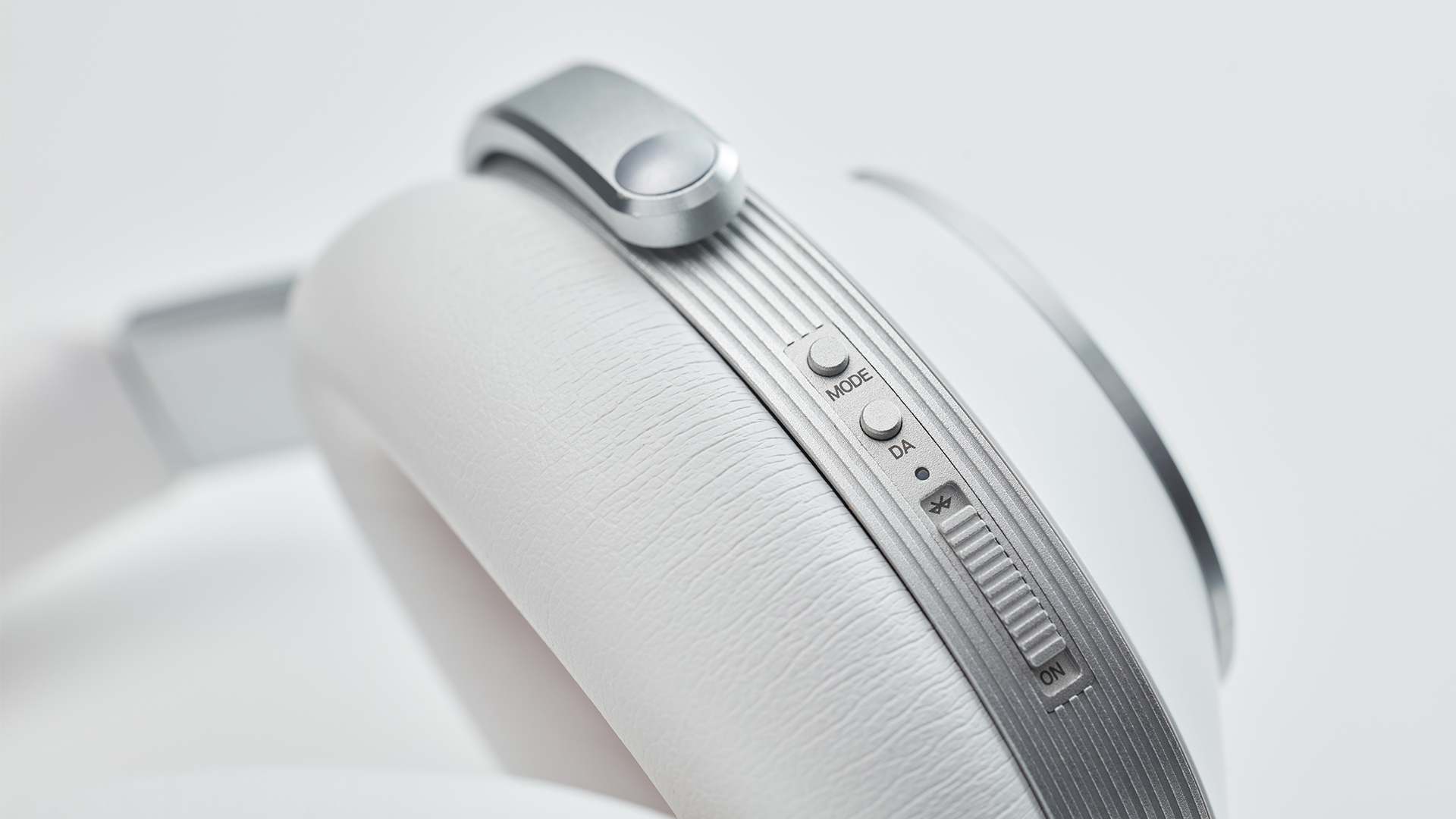
The company would also tell you that the Solitaire T are different to many other wireless noise-cancelling headphones, in that in order to nail sound quality it has prioritised acoustic construction, with all the cost and complexity involved, as opposed to relying on digital processing corrections to compensate.
That acoustic construction here revolves around a new 42mm dynamic transducer made of wood fibre plastic mixture (the magnetostat design of the Solitaire P was out of the question due to the Solitaire T’s smaller size), which apparently has very high power handling and can produce sound pressure levels over 120dB – that's equivalent to the volume of a chainsaw and therefore, we hope, more than you’d ever want or need. Aiding that is a pressure chamber system with sound guides and filters that works to linearise the frequency response and facilitate clean, powerful bass reproduction.
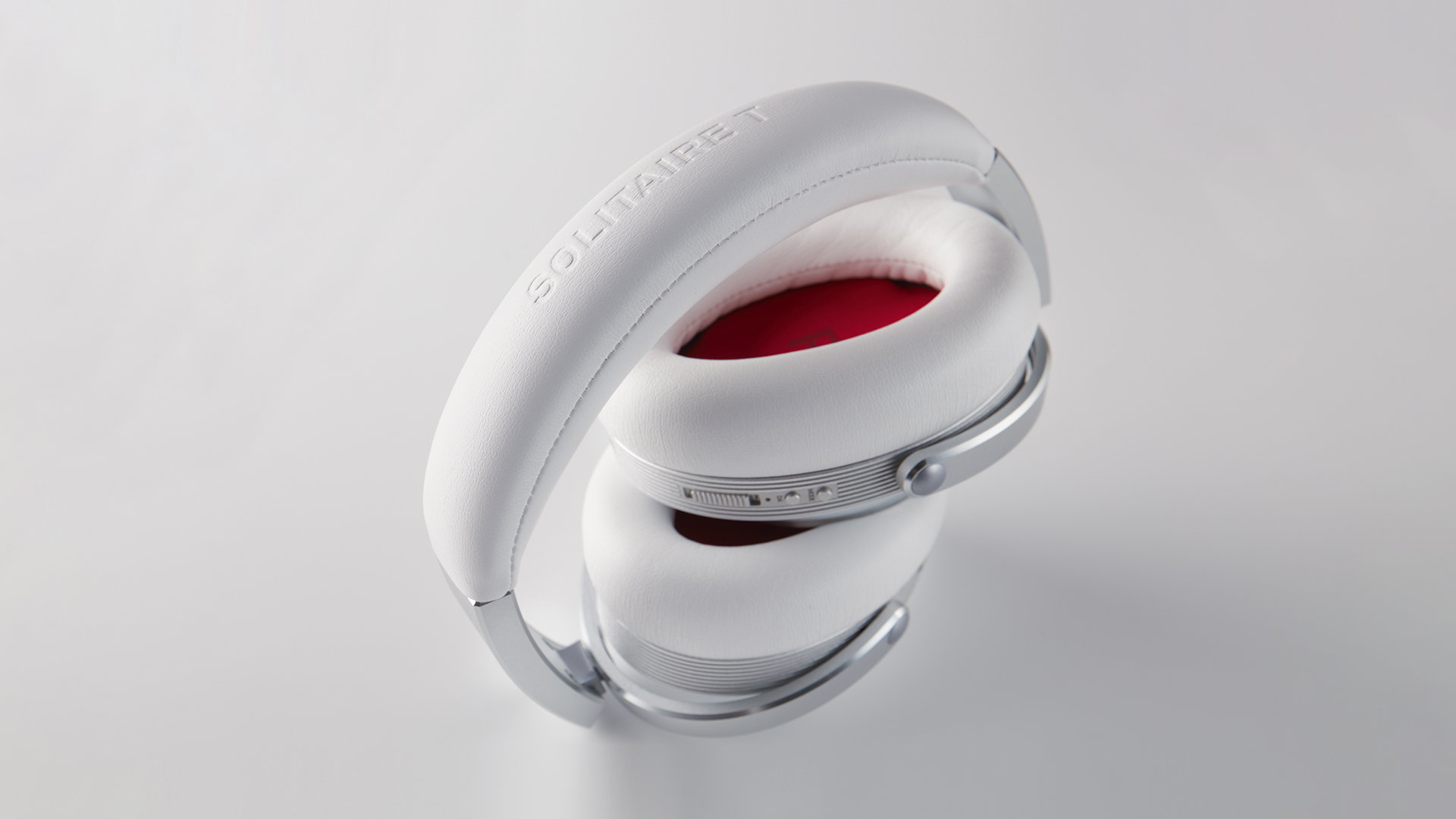
Inputs 2.5mm, USB-C
Bluetooth? Yes, 5.1
Codecs SBC, AAC, aptX, aptX HD
ANC? Yes
Battery life 35-70 hours
App? Yes
Finishes x2 (black and white)
Weight 325g
With that initial passive design principle in mind, it’s perhaps not surprising that the Solitaire T can be used strictly passively, wired via their 2.5mm jack socket and supplied audio cable, bypassing any electronics and processing. Of course, these things are needed to make use of wireless or digital connectivity and ANC, which brings us to their second mode – ‘Active’.
T+A has implemented three processors to handle the tasks. First is a Qualcomm (QCC 5127) chip, which accepts digital audio signals either over Bluetooth (aptX HD is supported) or via the USB-C connector or, post-analogue-to-digital-conversion, the balanced 2.5mm jack. This Qualcomm chipset also controls the main microphone and one of the ANC mics concerned with voice calls to ensure optimal quality. Then there’s a CXD noise-cancelling chip by Sony (exact model unspecified), which controls the Solitaire T’s four microphones with their feedback loops and handles the real-time equalisation and digital-to-analogue conversion before being passed to the Class A/B power amplifiers feeding the drivers. If ANC is off, the pathway is the same but simply skips the ANC processing part.
But not all active modes are born equal, as T+A’s third – ‘HQ’ (High Quality) – mode shows. Designed to squeeze as much performance out of the Solitaires in active operation as possible, HQ mode completely bypasses the Sony chip, sending the digital signals directly from the Qualcomm chip to a Sabre ESS DAC, which, post-conversion, routes them through a high-current power amplifier. As these higher-performing power amps require more power, this mode halves the Solitaire T’s battery life – albeit to a still very competitive 35 hours. That’s right, these puppies have a 70-hour battery life otherwise, trumping most wireless over-ear headphones’ endurance twice over.
You can see the T+A’s current battery status on a four-LED display by the power switch on the left earcup – handy – as well as on the T+A Solitaire companion app for iOS or Android. It’s a pretty basic app, all told, offering sound presets and individual equalisers, three modes of ANC (maximum, outdoor and office) to switch between, and a firmware update function, so it’s likely to be used rarely by most owners and merely for checking updates now and again. We’re glad we did the latter, as over the course of our five weeks of testing, T+A updated the Solitaire T with Bluetooth Multipoint support, allowing more than one device to be simultaneously connected to them; upped the supported data rate limit for the USB-C input to 24-bit/96kHz; and optimised those noise-cancelling modes.
Build
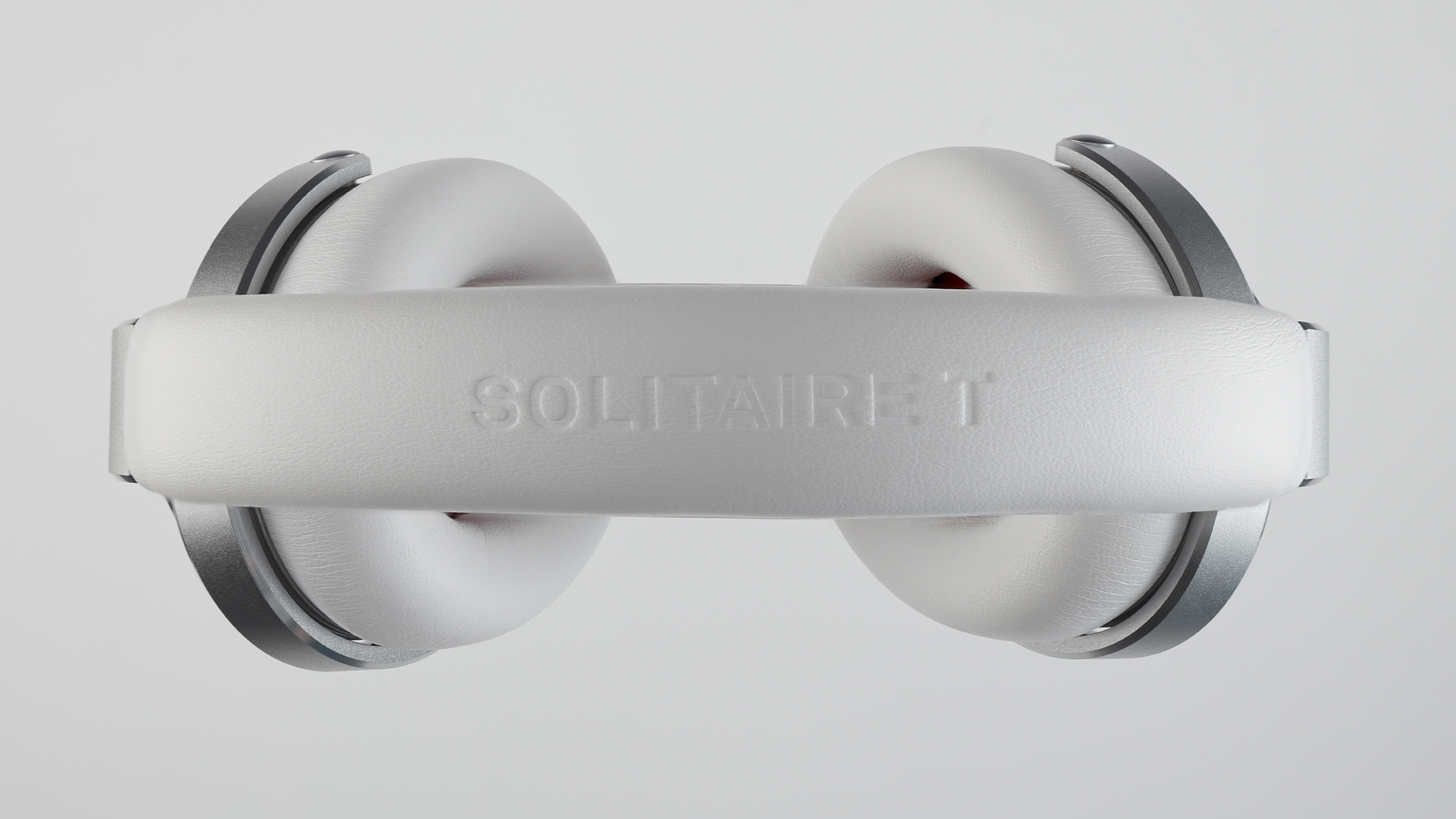
Not a given for wireless headphones these days, the Solitaire T are actually very tactile in design – as hands-on as ears-on from a usability perspective. There are sliders for power and Bluetooth pairing, tiny buttons for switching modes and launching your device’s digital voice assistant, plus a touch control surface on the right earcup for playback functions. These are as you’d expect – slide your finger up/down for volume, across for track skipping, and press once for play/pause – and pretty responsive considering the ovular surface area of the touchpad is no bigger than an egg's. We got the best results using our right thumb.
What we do like is that transparent mode – which, for the uninitiated, allows sound in so you can hear announcements or have a conversation without taking the headphones off – is activated for the duration of time you’re press-holding the touchpad’s small circular textured surface. Considering you’re only ever likely to want to use transparency mode for less than a minute, in our minds it’s much better than having to turn it on and then off again.
The T+A’s inevitable main challenge was to make a pair of travel-friendly, and therefore compact, headphones that look their price. It’s a hard task – after all, how can an everyday device of such everyday proportions look £1200 / $1600 / AU$2160 without being smothered in diamonds? – and their perceived value does indeed fall short. That probably isn’t helped by their seemingly minimalist aesthetic, but look and feel closely and you’ll realise they are more luxurious than first meets the eye. Anyone familiar with T+A’s hi-fi products will recognise the references to the company’s design language in the brushed aluminium frame and silver bands around the earcups, too.
Importantly, they are notably lightweight, weighing in at only 325g. And that aids comfort tremendously. We wore them on a long-haul flight for five to six hours straight without ever feeling the need to break from their company. The earpads are cushioning while the headband is padded enough to carry the headphones’ undemanding weight without burdening the top of your head. We should note, however, that one member of the What Hi-Fi? review team felt the back of the earcups lift slightly away from their head when walking due to the narrowness of the earpad cushions, so if you have a head that’s on the wider side we recommend you try on the Solitaire T before buying if you can.
Sound
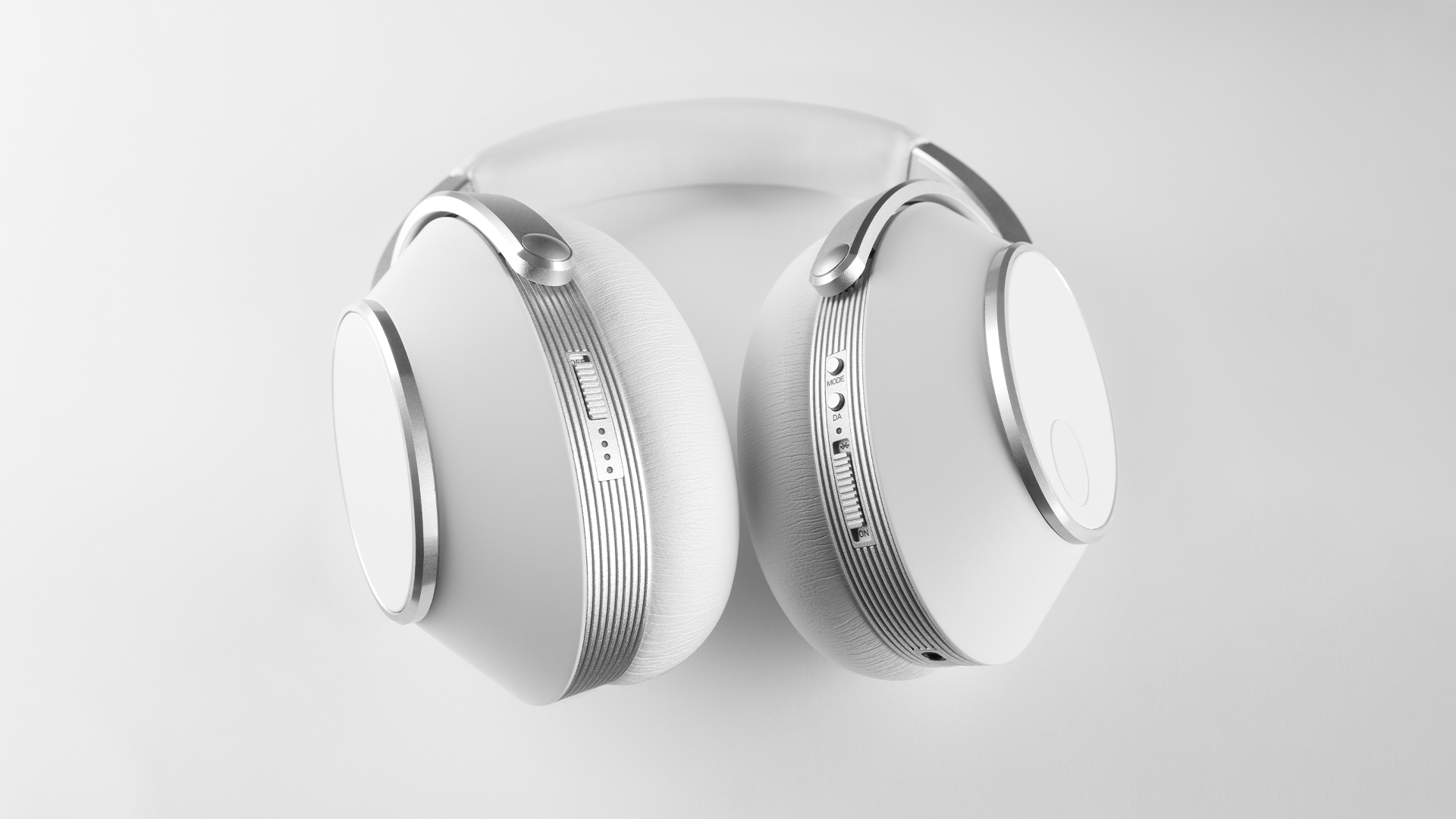
No such verification is needed in the sound department, however; we can’t imagine anyone not being impressed by the T+A’s performance, wired or wireless (they’re remarkably close in quality). Listening in HQ mode could even elicit an audible “wow” due to the unprecedented amount of detail, space and refinement it is able to achieve through a wireless implementation.
What strikes us first about the Solitaire T is how squeaky clean and natural-sounding they are. These are headphones that don’t wish to impart any character or colour on your music; they want to tell it as it is, and it makes for listen that we can’t describe as anything else but pure. Already we know they bridge the gap between wired and wireless performance as we know it.
Tonally they sit on the lean side of neutral and could benefit from a dose of sweetness in their handling of higher frequencies. They aren’t overly forgiving of poor recordings. You’ll want to bear in mind too that if you’re listening to them passively (i.e. wired), you should partner them with a good-quality DAC/headphone amp, as opposed to connecting directly into a phone or laptop where you won’t reap half of the headphones’ benefits.
Play Lightning Dust’s Wrecked from the Vancouver band’s new must-listen Nostalgia Killer album, and the opening building bassline hints at the Solitaire T’s dynamic expression from the off, only for it to be confirmed a minute or so later when the track’s synthesizer solo sizzles and soars to reveal dynamic subtlety on tap, as well as a soundstage with impressive scale.
It’s as tangible a soundstage as we’ve heard through wireless headphones, too, with each element of the track’s jangling instrumentation placed precisely on it, and with space around it assisting coherency. Amber Webber’s chilling vocal is fittingly front and centre, coming through clear as day and packed with emotion.
While the track’s pace is set by that bass guitar line, which bounces through the Solitaire T with pleasing agility and definition, the track is often anchored by plunging, deep chords, and it’s surprising how shapely they sound through the T+A. Through the Mark Levinson No.5909, they sound fatter and more droney; less explicitly drawn. The American rivals do reply with a bigger, more spacious presentation, but the Solitaire T are a level above when it comes to detail and organisation.
We go through our repertoire of test tracks willingly, playing everything from Nas to Nils Frahm, and the Solitaire’s transparency, purity and precision plays ball with every genre. They might be a bit on the analytical side – like left-brain folk, according to science – but they can still track a rhythm confidently and have a good time when it’s demanded of them.
There’s a notable, albeit not massive, degradation in sound quality switching from HQ mode to Active (which, of the four ways of listening, is understandably the least favoured), so we generally recommend you don’t unless you need the sound-isolating extremities of ANC or have gone on holiday to a desert island without your charger. While the active noise-cancellation is decent and recommended for noisy environments on planes and trains and the like, the design physically blocks out a good amount of external noise, and 35 hours of battery life is still practical.
Verdict
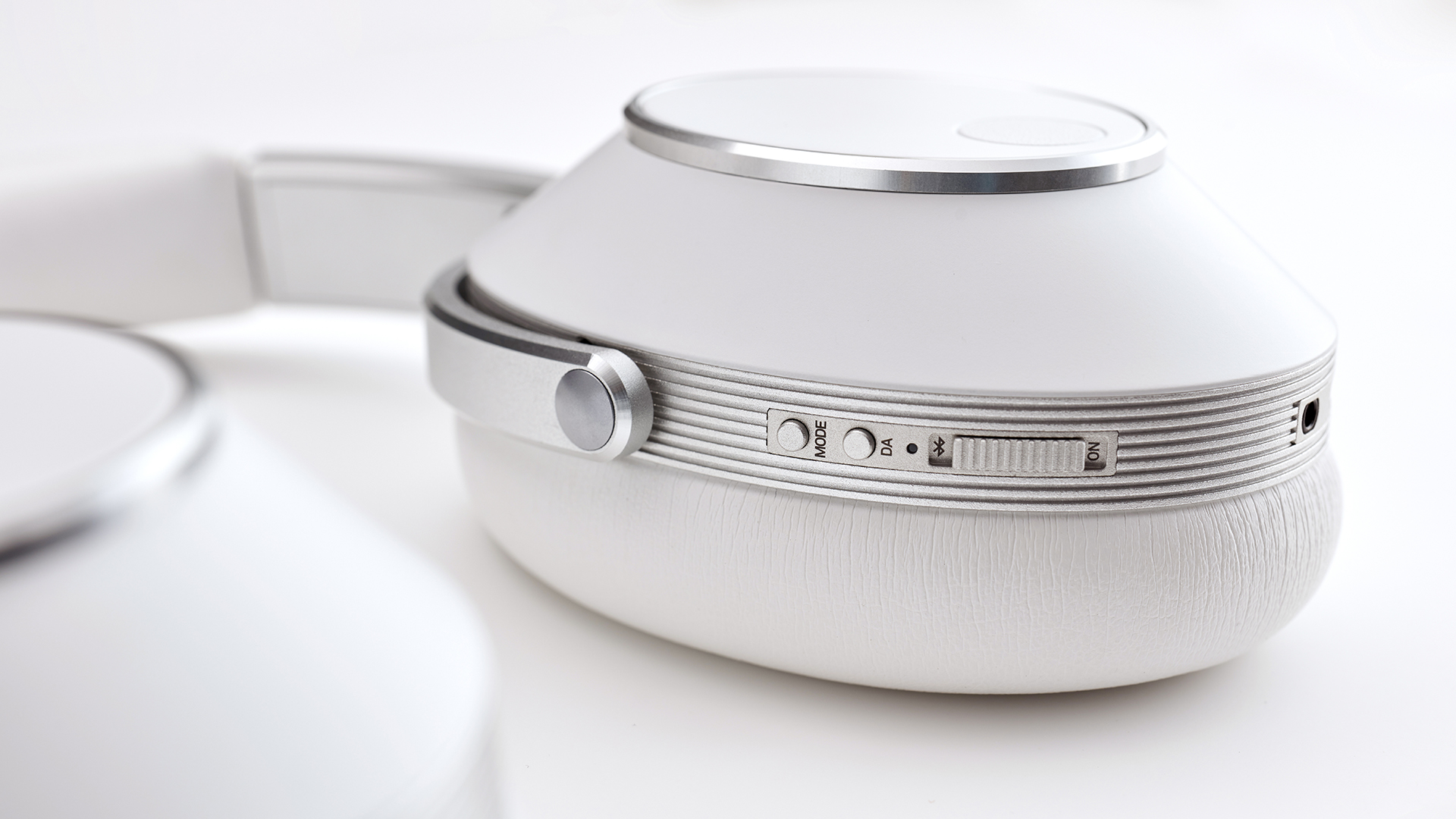
True to its Solitaire name, the T+A are gems, alone in a territory of wireless performance quality that no other pair we’ve heard can occupy.
They cost hundreds more than most people would ever dream of paying for headphones, wired or wireless, but for those who prioritise convenience and sound quality equally, and have the budget to spend big, the T+A Solitaire T nail that balance without compromise and are the most convincing wired/wireless hybrids we’ve come across. For now, they’re in a league of their own.
SCORES
- Sound 5
- Features 5
- Build 4
MORE:
Read our review of the Mark Levinson No. 5909
Best wireless headphones: Bluetooth headphones for every budget







